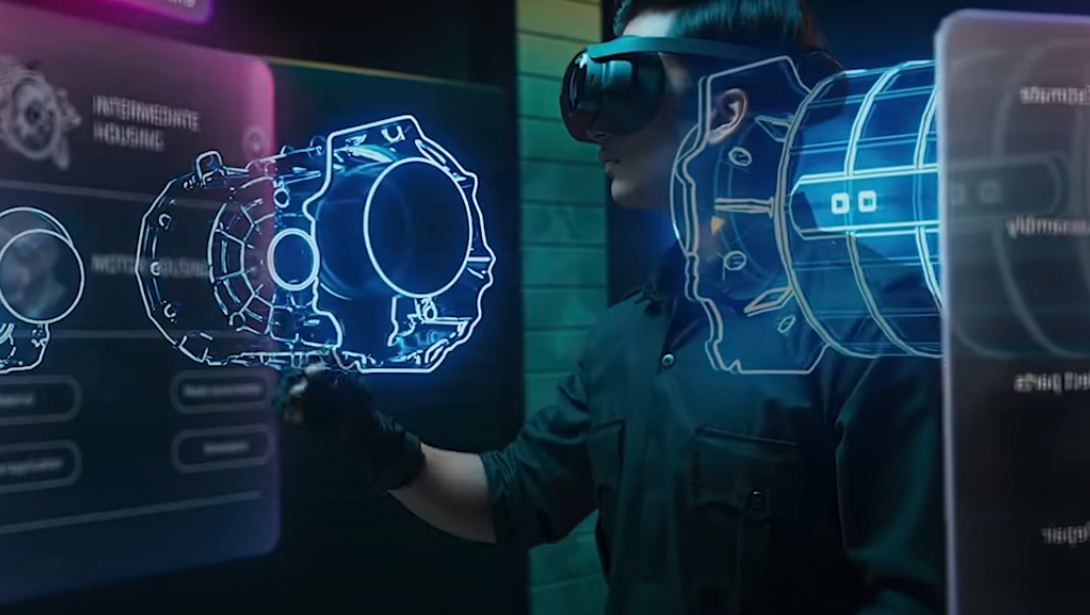Haptic technology (H T), a cutting-edge innovation in the world of technology, is reshaping how we engage with digital content. From the gaming industry to medical applications, haptic feedback has found its way into various sectors, enhancing user experiences in unprecedented ways.
Haptic technology, also known as kinaesthetic communication or 3D touch, is a technology that creates an experience of touch by applying forces, vibrations, or motions to the user. This can be used to create virtual objects in a computer simulation, to control virtual objects, and to enhance remote control of machines and devices.
There are many different types of haptic technology, but some of the most common include:
- Vibration: This is the most common type of haptic feedback, and it is used in a variety of devices, such as smartphones, game controllers, and virtual reality headsets. Vibration can be used to simulate a variety of sensations, such as bumps, knocks, and textures.
- Force feedback: This type of haptic feedback uses motors to apply forces to the user, which can be used to create a more realistic sense of touch. Force feedback is often used in joysticks and steering wheels, and it can be used to simulate the feeling of driving a car or flying a plane.
- Electrostatic: This type of haptic feedback uses electrostatic fields to create a tingling sensation on the skin. Electrostatic haptic feedback is not as common as vibration or force feedback, but it is starting to be used in some devices, such as smartwatches.
person using a joystick with force feedback
Haptic technology has a wide range of potential applications, and it is being used in a variety of industries, including:
- Gaming: Haptic feedback can be used to make games more immersive and realistic. For example, a racing game could use force feedback to simulate the feeling of driving a car, while a first-person shooter could use vibration to simulate the feeling of being shot.
- Medicine: Haptic technology can be used to train surgeons and other medical professionals. For example, a surgeon could use a haptic simulator to practice performing a surgery before operating on a real patient.
- Manufacturing: Haptic technology can be used to improve the quality of manufactured products. For example, a worker could use a haptic device to feel the surface of a product as it is being made, and this could help to identify any defects.

Table of Contents
Introduction
In this article, we delve into the intricate world of haptic technology, exploring its history, applications, challenges, and future trends. Let’s embark on a journey to understand how haptic feedback is transforming our digital interactions.
History of Haptic Technology (H T)
Early Development
H T traces its roots back to the early experiments with telegraph communication. Over the years, it evolved with innovations like force feedback in joysticks, paving the way for more sophisticated applications.
Milestones in Advancements
The journey of H T includes significant milestones, such as the development of touchscreens and the incorporation of haptic feedback in gaming consoles. These advancements set the stage for a revolution in user interface design.
How Haptic Technology Works
Basics of Haptic Feedback
Haptic feedback relies on the sense of touch to convey information to users. It simulates the sensation of touch through vibrations, force, or motion, creating a more immersive experience.
Types of Haptic Feedback
There are various types of haptic feedback, including tactile feedback, kinesthetic feedback, and vibrotactile feedback. Each type serves a unique purpose, contributing to the overall user experience.
Applications of Haptic Technology
Virtual Reality (VR)
In the realm of virtual reality, haptic feedback plays a crucial role in making digital environments feel more realistic. Users can sense the texture of objects and experience a deeper level of immersion.

Gaming Industry
H T has revolutionized gaming by providing players with a tactile experience. From the recoil of a virtual gun to the sensation of driving on different terrains, haptic feedback enhances the gaming adventure.
Medical Field
In medical applications, haptic feedback is utilized for surgical simulations and remote medical procedures. Surgeons can feel virtual tissues, improving their precision and skills.
Automotive Industry
H T is making driving safer with features like tactile feedback on touchscreens and steering wheels. This enhances driver awareness without causing distraction.
Challenges and Innovations
Overcoming Technical Challenges
While H T has made significant strides, it faces challenges such as latency and accuracy. Ongoing research aims to address these issues and further improve the technology.
Recent Innovations in Haptic Technology
Recent innovations include advancements in haptic actuators, enabling more realistic sensations. Additionally, research in material science has led to the development of more responsive tactile interfaces.
Future Trends
Integration with Artificial Intelligence
The future of H.T involves seamless integration with artificial intelligence, allowing devices to adapt and respond to user interactions in real-time.

Potential Industries to Adopt H T.
Industries such as education, manufacturing, and communication are poised to adopt H T, expanding its reach beyond entertainment and gaming.
Benefits of H T.
Enhanced User Experience
Haptic feedback enhances user engagement by providing a multisensory experience, making digital interactions more intuitive and enjoyable.
Accessibility Features
For individuals with visual or auditory impairments, H T. offers a new dimension of accessibility, making digital content more inclusive.
Impact on Learning and Training
In educational settings, H T. facilitates hands-on learning experiences, allowing students to interact with digital simulations in a tangible way.

Haptic Technology (H T) and Human Sensory Perception
Connection to Human Touch
The integration of haptic feedback aligns with the innate human desire for tactile interactions, bridging the gap between the physical and digital worlds.
Psychological Impacts
Studies suggest that haptic feedback can influence emotional responses, contributing to a more immersive and emotionally engaging digital experience.
Consumer Devices with Haptic Feedback
Smartphones
Modern smartphones incorporate haptic feedback to provide users with a tactile response to touch gestures, enhancing the overall user interface.
Wearable Devices
Haptic feedback in wearable devices, such as smartwatches, adds a layer of interactivity, notifying users discreetly through vibrations.
Limitations of Haptic Technology
Power Consumption
One of the challenges is the power consumption of haptic devices. Efforts are ongoing to develop more energy-efficient solutions without compromising performance.
Design Challenges
Designing devices with effective haptic feedback requires careful consideration of form factor and user experience, presenting designers with unique challenges.
Case Studies
Successful Implementations
Examining successful implementations of H T in products and systems provides insights into best practices and potential pitfalls.
Lessons Learned
Analyzing cases where H T faced challenges and setbacks offers valuable lessons for future developments and applications.
Haptic Technology in Education
Interactive Learning Tools
Educational applications of H T include interactive simulations that allow students to explore complex concepts in a hands-on manner.
Future Prospects
The integration of haptic feedback in education holds promise for creating more engaging and effective learning environments.
Social Impacts
Influence on Social Interactions
The incorporation of H T. in communication devices may reshape how people interact, adding a tactile dimension to digital conversations.
Ethical Considerations
As haptic technology becomes more prevalent, ethical considerations regarding privacy and consent must be addressed to ensure responsible use.
Expert Opinions
Interviews with Haptic Technology Experts
Gaining insights from experts in the field provides a deeper understanding of the current state and future potential of H T.
Insights from Industry Leaders
Industry leaders share their perspectives on the role of haptic technology in shaping the future of digital interactions.
Conclusion
In conclusion, haptic technology stands at the forefront of technological innovation, offering a bridge between the physical and digital worlds. Its applications are diverse, impacting industries and enhancing user experiences. As we navigate the future, the integration of haptic feedback with artificial intelligence and its expansion into various sectors promise a dynamic and immersive digital landscape.
FAQs
- Is haptic technology only used in gaming? Haptic technology extends beyond gaming, finding applications in virtual reality, medical simulations, education, and more.
- How does haptic feedback benefit users with disabilities? Haptic feedback adds a tactile dimension to digital interactions, making content more accessible for individuals with visual or auditory impairments.
- What challenges does haptic technology face in widespread adoption? Technical challenges, power consumption, and design considerations are among the challenges haptic technology is addressing for broader adoption.
- Can haptic technology influence emotional responses? Studies suggest that haptic feedback can have a psychological impact, influencing emotional responses in users.
- Where can I experience haptic technology in everyday devices? Haptic feedback is commonly found in modern smartphones and wearable devices, providing users with tactile responses to various interactions.









